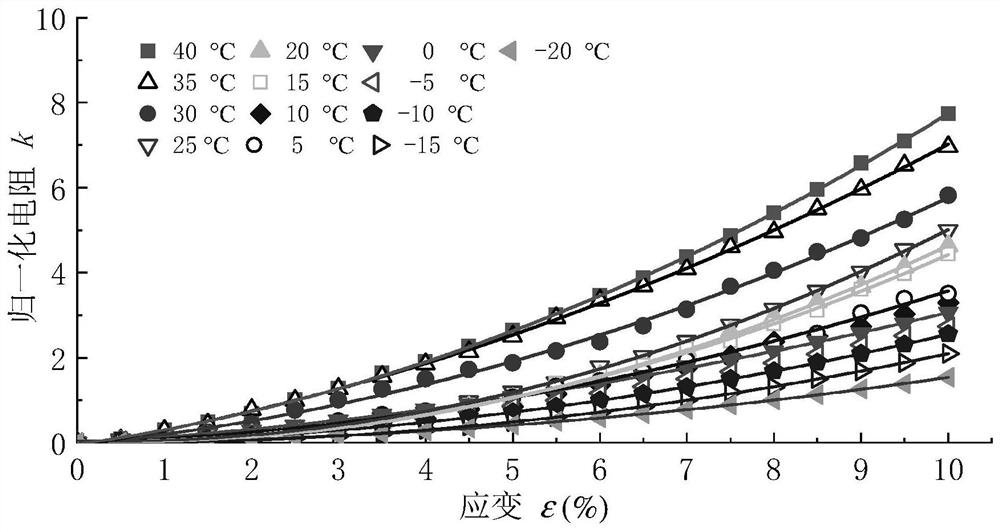Nonlinear Calibration Method for Pull Sensitivity Effect of Conducting Polymer Considering Temperature Effect
A conductive polymer, temperature effect technology, applied in the direction of strength characteristics, electromagnetic measurement devices, electromagnetic/magnetic solid deformation measurement, etc., can solve the problems of large temperature changes, poor accuracy of the deformation value of conductive polymers, etc. Effect
- Summary
- Abstract
- Description
- Claims
- Application Information
AI Technical Summary
Problems solved by technology
Method used
Image
Examples
example
[0069] A slow-speed tensile test was carried out on a temperature-controlled extensometer using a conductive polymer geobelt with high-density polyethylene (HDPE) as the matrix and superconducting carbon black as the filler. Each set of experiments was carried out at a constant temperature. The temperature is controlled every 5°C from -20°C to 40°C, the experimental results are as follows figure 1 shown.
[0070] (1) The pull-sensitivity characteristic curve at each temperature is the normalized resistance K corresponding to 10% strain 10 Perform normalization processing, such as figure 2 shown. It can be determined that the quadratic polynomial coefficients in formula (2) are: a=0.00845; b=0.01594.
[0071] (2)K 10 and working temperature T s relationship between image 3 As shown, the linear coefficient in formula (3) can be determined as: A=0.09421; B=3.162.
[0072] (3) Initial resistance value R 0 with the initial temperature T 0 The relationship between Figu...
PUM
 Login to View More
Login to View More Abstract
Description
Claims
Application Information
 Login to View More
Login to View More - R&D
- Intellectual Property
- Life Sciences
- Materials
- Tech Scout
- Unparalleled Data Quality
- Higher Quality Content
- 60% Fewer Hallucinations
Browse by: Latest US Patents, China's latest patents, Technical Efficacy Thesaurus, Application Domain, Technology Topic, Popular Technical Reports.
© 2025 PatSnap. All rights reserved.Legal|Privacy policy|Modern Slavery Act Transparency Statement|Sitemap|About US| Contact US: help@patsnap.com



